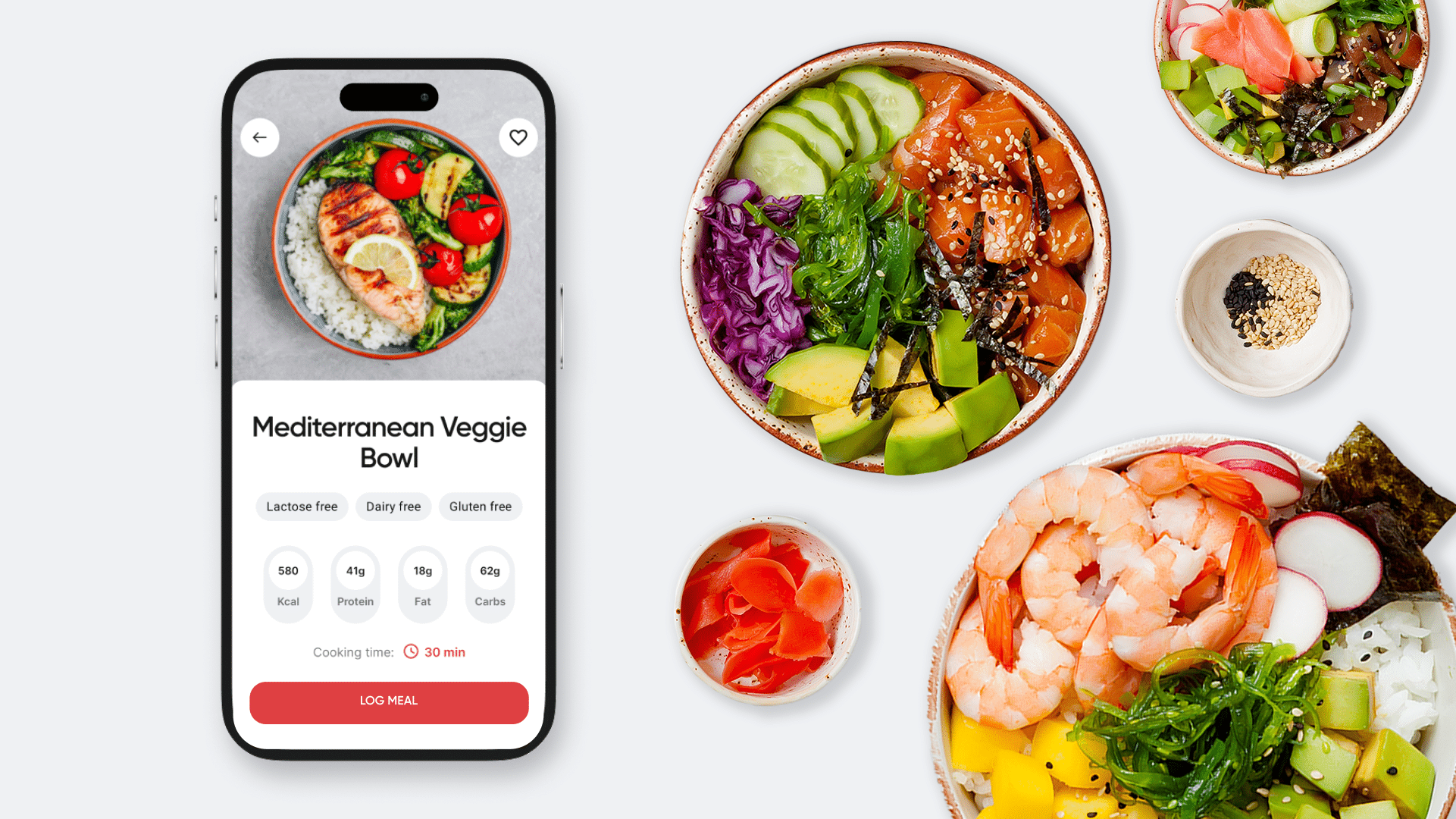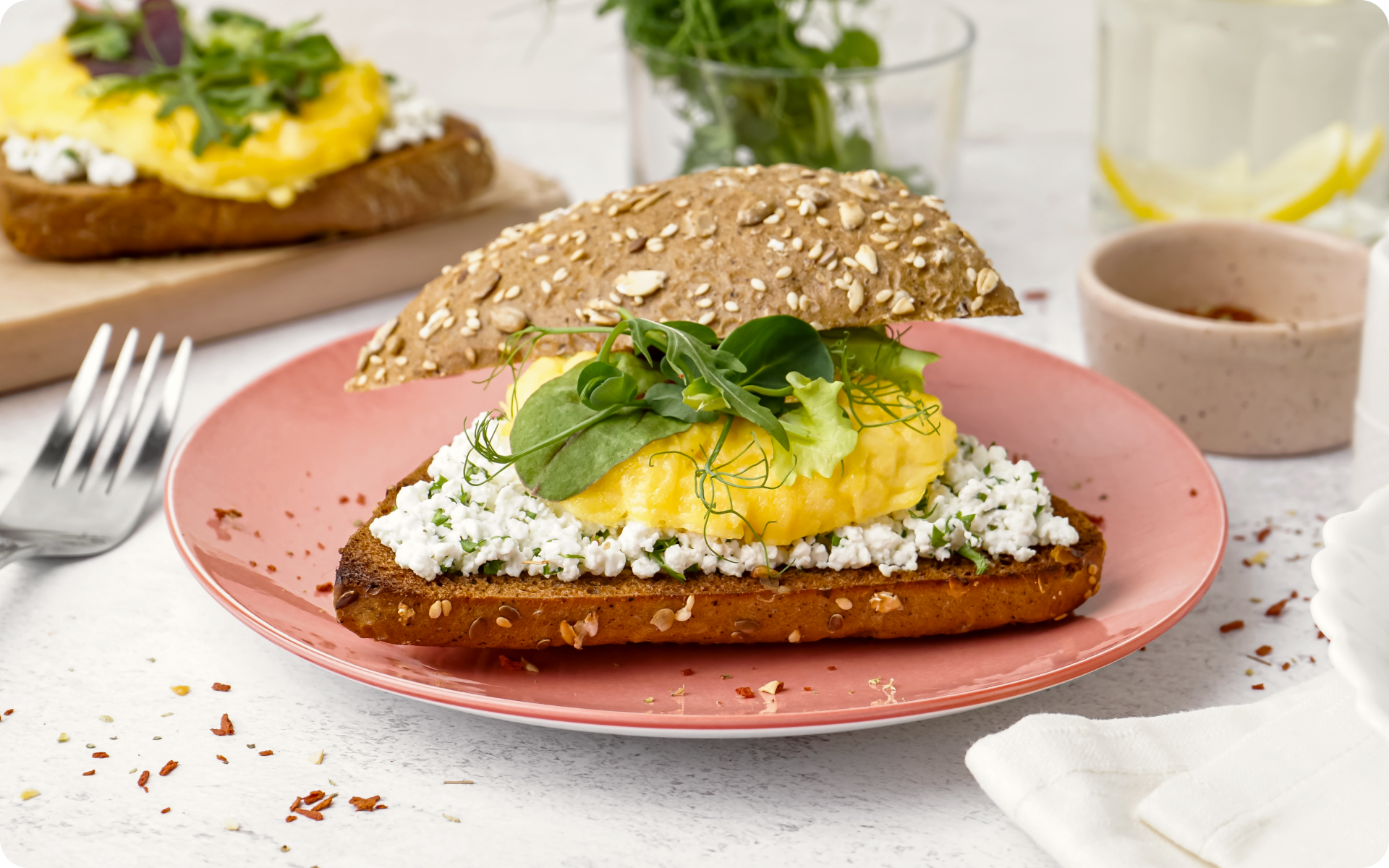With more and more people being afflicted with wheat or gluten intolerances and others simply looking to add more whole grains to their diet, previously little-known foods such as buckwheat are starting to attract a lot of attention.
Contrary to its name, buckwheat is not actually wheat but is classified as a pseudo-grain/pseudocereal. It is in the same class as quinoa and amaranth and is more of a seed that when whole is cooked and served similarly to a grain such as rice (3).
While this seed has long been a staple food in some parts of eastern Europe, the rest of the world is only now waking up to the incredible benefits of this pseudo-grain. This has led to the popularization of the buckwheat diet, with many claiming that it can help with weight loss and much more.
But is any of this true or are people placing too much faith in a mere seed? Read on for more details on potential buckwheat diet benefits, how to add this pseudocereal in a 1-month meal plan, and much more.
What Is the Buckwheat Diet?
According to an article by LiveStrong, the buckwheat diet is a type of mono diet that advises its users to put away all other kinds of food and eat nothing but buckwheat for all 3 meals every day (5).
Also known as monotropic diets, such eating plans are often popularized due to their promises of quick weight loss. Unfortunately, there is no scientific evidence that backs up the success of such claims.
Instead, a deeper look at these eating plans shows that not only is the weight loss short-term, but eating like this can contribute to a slew of issues including nutrient deficiencies, binge eating, yo-yo dieting, body image issues, and uncontrollable cravings (16).
Instead of using the buckwheat diet as a mono diet, we suggest adding it to your already existing healthy balanced diet. Two ways you can do this are:
- Switching out some of your refined grains for buckwheat
- Alternating buckwheat and other whole grains for some variety. For example, instead of having oats every morning, pick a day and have some buckwheat porridge instead.
Is Buckwheat Healthy?
Yes, it is. Buckwheat is one of the healthiest whole-grain foods you can have in your diet. Just 100 g of this pseudo-grain provides your meal with good complex carbs, plant protein, and numerous minerals and antioxidants.
Here are the nutritional facts of buckwheat from the USDA (per 100g) (2):
- Calories – 356 kcal
- Carbs – 71.1 g
- Protein – 11.1 g
- Total fiber – 4.8 g
- Fats – 3.04 g
- Magnesium – 203 mg
- Phosphorous – 374 mg
- Potassium – 414 mg
- Calcium – 14 mg
- Molybdenum – 55.2 µg
- Selenium – 13.6 µg
- Biotin – 18.6 µg
The pseudo-grain also has varying amounts of other essential nutrients such as manganese, copper, zinc, iron, thiamin, and niacin.
These impressive nutritional facts play a huge role in a variety of health benefits of this pseudo cereal.
If you tend to let yourself off the hook, raise the white flag when things get tougher than you expected, send yourself on an unconscious binge-eating trip – BetterMe app is here to help you leave all of these sabotaging habits in the past!
Potential Buckwheat Diet Health Benefits
As stated above, using the buckwheat diet as a mono diet may not be the best of ideas. However, adding this whole grain to your eating plan in reasonable amounts may contribute to improved health in the following areas
Improved heart health
There is no doubt that an increased intake of whole grains can be incredibly good for your heart and cardiovascular health.
A review of 45 studies published in 2016 found that an increased intake of just 90 g a day of whole grains may help reduce the risk of coronary heart disease, cardiovascular disease, cancer, mortality, respiratory diseases, infectious diseases, and diabetes (17).
One study that followed over 113,000 people for a period of almost 26 years found that the people who had a higher consumption of whole grains had a significantly lower risk of coronary heart disease (9).
Buckwheat is also high in rutin, a bioflavonoid that has antioxidant and anti-inflammatory effects and may also help prevent high blood cholesterol levels, a risk factor for heart disease(4).
This all goes to show that adding some of this pseudo-grain to your diet may do wonders for your heart and cardiovascular health.
Improved digestion and gut health
If you struggle with irregular bowel movements or constipation, trying out some buckwheat diet recipes may be part of the solution to your problems. This whole grain, like many others of its kind, contains dietary fiber. Also known as roughage, it’s a portion of plant-derived food that cannot be completely broken down by human digestive enzymes.
Dietary fiber not only helps your gut in digestion, but it also helps food move within the intestines which improves regularity and reduces the risk of constipation.
Some types of fiber also act as prebiotics, which means that it feeds the beneficial bacteria in your gut. Another study on rats also showed that buckwheat may have prebiotic effects in the gut, which can support the population of good bacteria, potentially improving digestion (12).
Weight management
If your decision to look into a buckwheat diet menu was triggered by a desire to lose weight, then you’re in luck. A higher intake of whole grains has been linked to reduced body weight and BMI (13, 15).
This effect is generally attributed to the higher fiber content that is often found in such grains. In addition to helping with digestion and gut health, fiber also slows down digestion, which helps boost satiety. The less hungry you feel, the less you eat/snack throughout the day. This helps reduce your calorie intake, which can lead to fat reduction and weight loss.
Management and reduced risk of diabetes
If you already suffer from diabetes, adding buckwheat to your diet may help with the management of the disease, particularly if you use it to replace a more refined grain product. As previously mentioned, buckwheat is a complex carbohydrate that is rich in fiber. Our bodies take longer to break down and digest complex carbs, something that keeps your blood sugar from spiking.
One study published in 2016 showed that a higher intake of tartary buckwheat in type 2 diabetes patients led to a reduction in insulin, total cholesterol, and low-density lipoprotein cholesterol, in addition to insulin resistance – all of which supports the hypothesis that this pseudo-grain can improve the management of type 2 diabetes (7).
For those who don’t suffer from the illness but want to take preventative measures, research has suggested that a higher intake of whole grains is significantly associated with a lower risk of type 2 diabetes (10).
Read more: 7-Day Weight Loss Low-Carb Diet: Choose High-Protein, High-Fiber, or Ultra-Low-Carb
Is It OK to Eat Buckwheat Every Day?
Yes, it is. As long as your 7-day buckwheat diet plan doesn’t include eating this pseudo-grain for every meal of the day and exclude other grain products or starchy foods, it’s perfectly fine to eat it every day.
Think of it in the same way as some people prefer to have the same breakfast every day. As long as you don’t get bored with it, there’s no reason why you can’t have it for at least one meal a day.
Can You Lose Weight Eating Buckwheat?
Yes, you can. Using buckwheat for weight loss is a viable option. As explained in the ‘potential health benefits’ section above, consuming a diet with a higher intake of whole grains such as buckwheat has been suggested to help reduce BMI and weight
Buckwheat is also an excellent source of plant protein. Protein has been shown to help build muscle and increase energy expenditure, two factors that also help with weight loss (6).
One study that looked at the effects of a plant-based diet on overweight individuals found that plant protein can help with improvements in body composition and reductions in both body weight and insulin resistance. Researchers also stated that replacing animal protein with plant protein may result in decreased fat mass (1).
How to Cook Buckwheat for Weight Loss
Buckwheat is often cooked and served like rice or quinoa, so boiling it is the easiest way to prepare it. Here’s how to do it
Ingredients
- 1 cup toasted buckwheat groats
- 1 ½ cups water
- 1 to 2 tbsp unsalted butter
- ½ tsp fine salt – or to taste
Instructions
- Place a small pan on a medium-high heat and bring the water to a boil.
- As the water comes to a boil, wash your rice in a metal strainer until the water runs clear.
- Once the water starts to boil, stir in the salt and unsalted butter.
- Pour in your clean buckwheat and stir. Cover the saucepan with a lid and allow the mixture to come to a gentle simmer.
- Reduce your heat to low and let the buckwheat simmer and cook for 13 to 15 minutes. If after this the water still hasn’t evaporated, cover again and check at 1-minute intervals to see if the water has evaporated.
- Once all the water is gone, remove the pan from the heat and let the boiled buckwheat rest for 10 minutes.
- Serve with your desired sides.
This makes 2 servings.
What to Eat with Buckwheat
This pseudo-grain can be eaten with whatever sides or accompaniments you normally eat with rice or quinoa. You can also make pancakes, bread, cookies, or cake with buckwheat the same way you do with oats.
Here are some examples:
Gluten-Free Vegan Buckwheat Pancakes
Ingredients
- 1 tbsp ground flaxseed
- 1 cup unsweetened non-dairy milk
- 1 tsp white or apple cider vinegar
- 1 cup buckwheat flour
- 1 ½ tsp baking powder
- ½ tsp baking soda
- ½ tsp ground cinnamon
- ¼ tsp salt
- ⅛ tsp ground nutmeg
- 1 mashed medium-sized banana
- 1 tbsp canola or avocado oil
Instructions
- In a small bowl, add flaxseed and 2 ½ tbsp water to make a flax egg. Stir and then set aside for 5 minutes.
- Once the flax is ‘formed’, add it with all the other ingredients and pulse till everything is combined
- Place your skillet on the heat, grease it, and cook your pancakes on medium heat. Cook each side for approximately 5 minutes or until they’re lightly browned.
- Serve with berries and nuts or just by themselves. They go perfectly with tea or coffee.
This makes 3 servings, each serving being 3 to 4 pancakes (14).
Calories for 1 serving: 243. Fats: 8 g. Protein: 6.4 g. Carbs: 41.2 g
BetterMe app is a foolproof way to go from zero to a weight loss hero in a safe and sustainable way! What are you waiting for? Start transforming your body now!
Mediterranean Salad
Ingredients
- ½ cup buckwheat groats
- 1 ¼ cups water
- ½ cup diced red onion
- 1 cup cherry or grape tomatoes
- 1 cup chopped cucumber
- ½ cup pitted kalamata olives
- 1 seeded and chopped yellow or orange bell pepper
- ¼ cup olive oil
- Juice of one lemon
- ½ tsp sea salt
- 1 tsp dried oregano
- ½ cup crumbled feta cheese (optional – leave out if vegan)
- ¼ cup chopped fresh parsley
Instructions
- Boil the buckwheat as instructed above and allow it to cool.
- As this cooks, whisk together olive oil, lemon juice, salt, and oregano in a small bowl. Set aside.
- Combine the cooked and cooled buckwheat with tomato, cucumber, olives, and bell pepper in a salad bowl.
- Drizzle the dressing you made in step 2 over the food.
- Toss until everything is combined and garnish with the feta (if using) and the parsley.
This makes 4 servings (11). You can add some tofu, chicken breast, or beef chunks to increase the protein macros.
Calories for 1 serving: 215. Fats: 20 g. Protein: 3 g. Carbs: 5 g
Read more: 24 Weight Loss Smoothies, 2 Diet Plans, and 5 Belly Fat Smoothie Secrets
Does Buckwheat Increase Metabolism?
A study review published in 2017 in the Journal of Nutrition Health and Food Science stated that whole grains have compounds such as fibers, alkaloids, flavonoids, saponins, and other phytochemicals, vitamins, antioxidants, and immune modulators that may reduce the risk of obesity, diabetes, and cardiovascular diseases, while also improving metabolic functions such as fat oxidation (18).
FAQs
How much buckwheat should I eat a day?
One serving of buckwheat is said to be around ½ cup to ¾ cup (cooked). This can be enough for 1 day to allow for the inclusion of a variety of different whole-grain products and other complex carbohydrates.
Is buckwheat or oats better for weight loss?
Having both in your diet is actually the best option. Both oats and buckwheat are whole grains that have similar health benefits and nutrition facts. If you have access to both, alternate them in your menu and dishes.
Is buckwheat heavy to digest?
Not particularly. Buckwheat is high in dietary fiber, which the body cannot digest. However, this is a positive thing for digestive health.
What is the 7-day protein shake diet?
The 7-day protein shake diet is a mono diet that requires people who partake in it to replace all their normal 3 main meals of the day with protein shakes. It also allows 2 small snacks (less than 100 kcals). As explained above, mono diets are not nutritionally sound and can cause malnutrition, cravings, and short-term weight loss.
Why am I craving spicy food?
A craving for spicy foods can be due to:
- Personal preference for spicier foods
- Social influences – people around you eat spicy foods and now you find yourself wanting to try some
- Hormonal cravings due to PMS or pregnancy
The Bottom Line
Trying a buckwheat diet can be beneficial for your health, but only if you don’t do it as a mono diet. Buckwheat is nutritious, but it doesn’t have the ability to replace all other foods – no food has such an ability. Instead, you should opt to strategically add buckwheat to your diet through several meals throughout the week. This is a much healthier route where you get the benefits of said whole grain while also getting to eat other nutritious foods that are good for your health.
DISCLAIMER:
This article is intended for general informational purposes only and does not serve to address individual circumstances. It is not a substitute for professional advice or help and should not be relied on for making any kind of decision-making. Any action taken as a direct or indirect result of the information in this article is entirely at your own risk and is your sole responsibility.
BetterMe, its content staff, and its medical advisors accept no responsibility for inaccuracies, errors, misstatements, inconsistencies, or omissions and specifically disclaim any liability, loss or risk, personal, professional or otherwise, which may be incurred as a consequence, directly or indirectly, of the use and/or application of any content.
You should always seek the advice of your physician or other qualified health provider with any questions you may have regarding a medical condition or your specific situation. Never disregard professional medical advice or delay seeking it because of BetterMe content. If you suspect or think you may have a medical emergency, call your doctor.
SOURCES
- A plant-based diet in overweight individuals in a 16-week randomized clinical trial: metabolic benefits of plant protein (2018, ncbi.nlm.nih.gov)
- Buckwheat, whole grain (2023, fdc.nal.usda.gov)
- Buckwheat (2024, britannica.com)
- Buckwheat and CVD Risk Markers: A Systematic Review and Meta-Analysis (2018, ncbi.nlm.nih.gov)
- Buckwheat Diet (n.d., livestrong.com)
- Clinical Evidence and Mechanisms of High-Protein Diet-Induced Weight Loss (2020, ncbi.nlm.nih.gov)
- Dietary tartary buckwheat intake attenuates insulin resistance and improves lipid profiles in patients with type 2 diabetes: a randomized controlled trial (2016, pubmed.ncbi.nlm.nih.gov)
- Effect of Niacin on Growth Performance, Intestinal Morphology, Mucosal Immunity and Microbiota Composition in Weaned Piglets (2021, ncbi.nlm.nih.gov)
- Intake of whole grain foods and risk of coronary heart disease in US men and women (2022, bmcmedicine.biomedcentral.com)
- Intake of whole grain foods and risk of type 2 diabetes: results from three prospective cohort studies (2020, bmj.com)
- MEDITERRANEAN BUCKWHEAT SALAD (2021, thefoodblog.net)
- Role of buckwheat diet on rats as prebiotic and healthy food (2003, sciencedirect.com)
- The Relationship between Whole Grain Intake and Body Weight: Results of Meta-Analyses of Observational Studies and Randomized Controlled Trials (2019, ncbi.nlm.nih.gov)
- Vegan Buckwheat Pancakes (2019, emilieeats.com)
- Weight loss induced by whole grain-rich diet is through a gut microbiota-independent mechanism (2020, ncbi.nlm.nih.gov)
- What Is the Mono Diet? (2022, verywellfit.com)
- Whole grain consumption and risk of cardiovascular disease, cancer, and all cause and cause specific mortality: systematic review and dose-response meta-analysis of prospective studies (2016, ncbi.nlm.nih.gov)
- Whole Grains in Amelioration of Metabolic Derangements (2017, ncbi.nlm.nih.gov)












